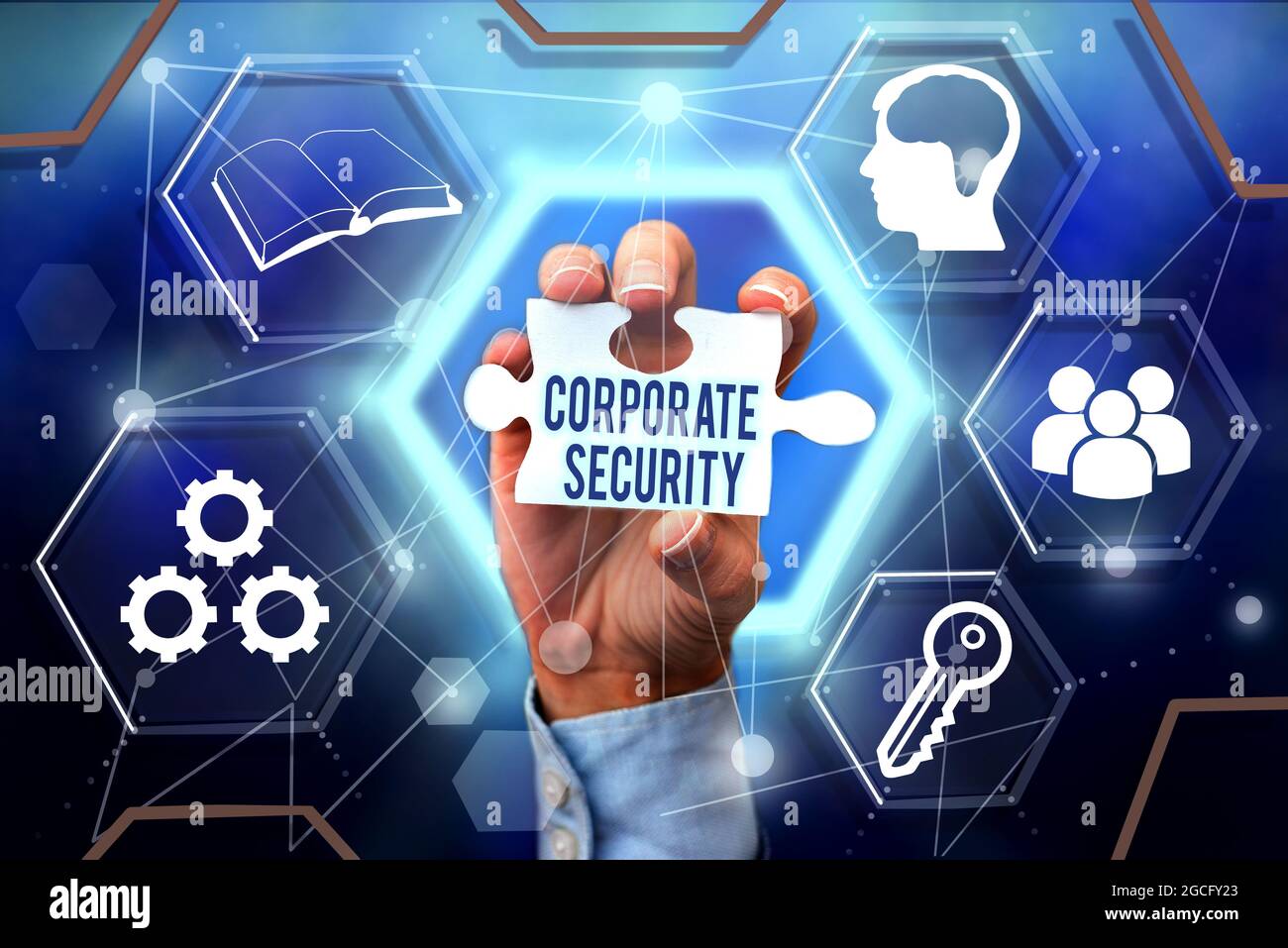A Plan for Corporate Security Quality: Guarding Your Venture
A Plan for Corporate Security Quality: Guarding Your Venture
Blog Article
From Cybersecurity to Physical Procedures: Enhancing Corporate Safety And Security in a Changing World
In today's quickly progressing digital landscape, the importance of corporate protection can not be overstated. As cyber dangers end up being progressively innovative and prevalent, organizations have to go past standard cybersecurity measures to protect their procedures and properties - corporate security. This is where the integration of physical safety measures ends up being important. By incorporating the strengths of both cybersecurity and physical safety, firms can create an extensive protection strategy that deals with the varied array of threats they face. In this conversation, we will certainly check out the transforming danger landscape, the need to incorporate cybersecurity and physical security, the implementation of multi-factor authentication procedures, the importance of employee awareness and training, and the adaptation of safety actions for remote labor forces. By checking out these vital locations, we will certainly obtain beneficial understandings into how organizations can strengthen their corporate safety and security in an ever-changing world.
Recognizing the Transforming Threat Landscape
The advancing nature of the contemporary globe requires an extensive understanding of the changing hazard landscape for efficient corporate security. In today's digital and interconnected age, hazards to business security have become a lot more complex and innovative. As innovation advances and organizations end up being increasingly dependent on digital facilities, the potential for cyberattacks, information violations, and other security breaches has actually considerably increased. It is critical for organizations to remain informed and adapt their protection measures to attend to these evolving threats.
One key element of recognizing the transforming risk landscape is identifying the different sorts of hazards that companies face. Cybercriminals are frequently developing new methods to make use of susceptabilities in computer system systems and networks. These hazards can vary from malware and ransomware strikes to phishing rip-offs and social design strategies. Furthermore, physical dangers such as burglary, criminal damage, and corporate espionage continue to be widespread issues for organizations.
Tracking and examining the risk landscape is necessary in order to determine prospective risks and vulnerabilities. This entails remaining upgraded on the most recent cybersecurity patterns, evaluating risk intelligence records, and performing normal danger evaluations. By understanding the changing hazard landscape, companies can proactively execute ideal security actions to reduce risks and secure their possessions, online reputation, and stakeholders.
Integrating Cybersecurity and Physical Safety And Security
Integrating cybersecurity and physical protection is critical for detailed corporate defense in today's digital and interconnected landscape. As companies progressively count on innovation and interconnected systems, the boundaries in between physical and cyber risks are coming to be blurred. To properly guard versus these risks, an all natural technique that integrates both cybersecurity and physical security actions is important.
Cybersecurity focuses on securing electronic possessions, such as networks, data, and systems, from unapproved access, disturbance, and theft. Physical security, on the various other hand, includes measures to secure physical possessions, people, and centers from susceptabilities and threats. By integrating these 2 domain names, companies can attend to susceptabilities and threats from both physical and electronic angles, therefore enhancing their general security position.
The combination of these 2 techniques permits for a more extensive understanding of safety and security threats and enables a unified reaction to occurrences. For instance, physical gain access to controls can be boosted by incorporating them with cybersecurity methods, such as two-factor verification or biometric recognition. Likewise, cybersecurity procedures can be enhanced by physical safety actions, such as security video cameras, alarms, and protected access points.

Implementing Multi-Factor Verification Procedures
As companies increasingly prioritize thorough safety measures, one efficient strategy is the implementation of multi-factor verification procedures. Multi-factor verification (MFA) is a security approach that calls for individuals to offer several types of recognition to access a system or application. This technique includes an extra layer of security by incorporating something the user understands, such as a password, with something they have, like a safety or a fingerprint token.
By implementing MFA, organizations can dramatically boost their safety and security pose - corporate security. Typical password-based verification has its limitations, as passwords can be easily compromised i loved this or forgotten. MFA reduces these dangers by adding an extra verification aspect, making it extra difficult for unauthorized individuals to access to delicate details
There are a number of kinds of multi-factor verification techniques offered, including biometric authentication, SMS-based verification codes, and equipment symbols. Organizations require to examine their particular demands and choose the most appropriate MFA remedy for their demands.
Nonetheless, the application of MFA ought to be thoroughly planned and executed. It is crucial to strike an equilibrium in between safety and security and usability to avoid user stress and resistance. Organizations ought to also think about possible compatibility issues and give ample training and support to make sure a smooth shift.
Enhancing Worker Awareness and Training
To strengthen company safety, organizations have to prioritize enhancing worker awareness and training. In today's swiftly developing threat landscape, staff members play an important role in securing an organization's delicate information and possessions. Lots of safety and security violations occur due to human error or absence of awareness. As a result, companies require to buy thorough training programs to educate their workers concerning prospective dangers and the most effective methods for minimizing visit their website them.
Efficient staff member recognition and training programs should cover a broad variety of subjects, consisting of information defense, phishing strikes, social design, password hygiene, and physical security steps. These programs must be customized to the certain demands and duties of different employee roles within the organization. Regular training sessions, workshops, and simulations can help employees develop the required abilities and expertise to react and determine to safety and security risks efficiently.
In addition, companies ought to encourage a society of safety and security understanding and provide recurring updates and tips to keep staff members notified about the most up to date dangers and mitigation strategies. This can be done with inner interaction channels, such as e-newsletters, intranet websites, and e-mail campaigns. By fostering a security-conscious labor force, organizations can dramatically minimize the likelihood of protection events and shield their important properties from unapproved gain access to or concession.

Adapting Safety Measures for Remote Workforce
Adapting company safety steps to suit a remote workforce is vital in making certain the protection of sensitive info and assets (corporate security). With the enhancing fad of remote work, companies must carry out proper protection actions to reduce the threats related to this brand-new means of functioning
One critical facet of adjusting protection actions for remote job is developing safe and secure interaction networks. Encrypted messaging systems and online personal networks (VPNs) can help safeguard sensitive information and prevent unauthorized access. Additionally, organizations need to apply using solid passwords and multi-factor authentication to enhance the security of remote access.
An additional vital factor to consider is the application of protected remote access remedies. This includes offering employees with secure accessibility to business resources and information with virtual desktop read the article computer facilities (VDI), remote desktop methods (RDP), or cloud-based options. These innovations make sure that sensitive details continues to be safeguarded while enabling staff members to do their roles successfully.

Finally, detailed protection awareness training is important for remote workers. Educating sessions need to cover best practices for safely accessing and managing delicate details, recognizing and reporting phishing efforts, and maintaining the overall cybersecurity hygiene.
Conclusion
In conclusion, as the risk landscape remains to develop, it is important for companies to enhance their protection gauges both in the cyber and physical domain names. Incorporating cybersecurity and physical protection, applying multi-factor verification procedures, and boosting worker understanding and training are necessary actions towards accomplishing robust corporate security. In addition, adjusting safety procedures to fit remote workforces is crucial in today's altering world. By executing these measures, organizations can minimize threats and protect their important properties from prospective hazards.
In this conversation, we will discover the altering threat landscape, the requirement to integrate cybersecurity and physical safety, the implementation of multi-factor verification steps, the relevance of worker recognition and training, and the adaptation of protection steps for remote labor forces. Cybersecurity steps can be enhanced by physical security procedures, such as surveillance cams, alarm systems, and safe accessibility points.
As companies increasingly focus on thorough safety steps, one efficient strategy is the implementation of multi-factor authentication actions.In conclusion, as the risk landscape proceeds to advance, it is essential for companies to reinforce their security measures both in the cyber and physical domains. Integrating cybersecurity and physical safety, implementing multi-factor authentication steps, and improving worker recognition and training are essential steps towards accomplishing robust business safety.
Report this page